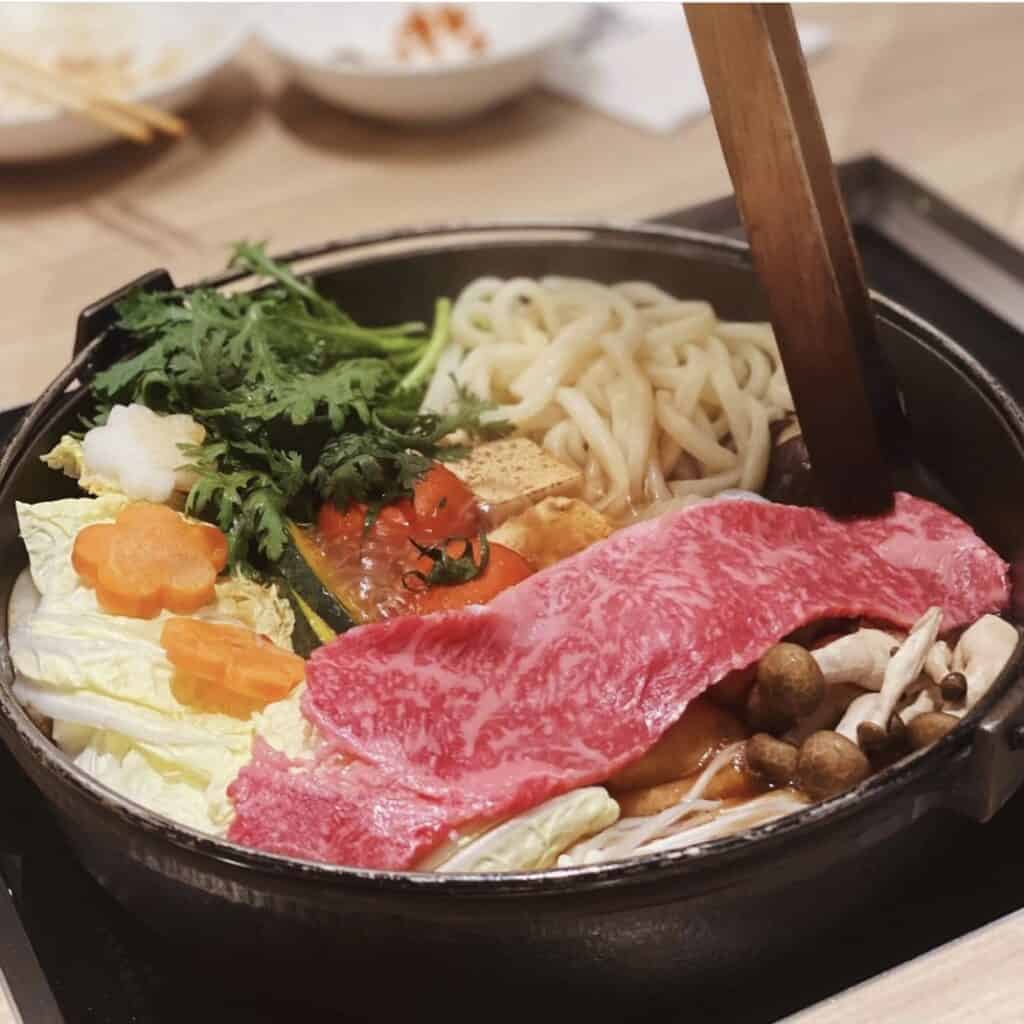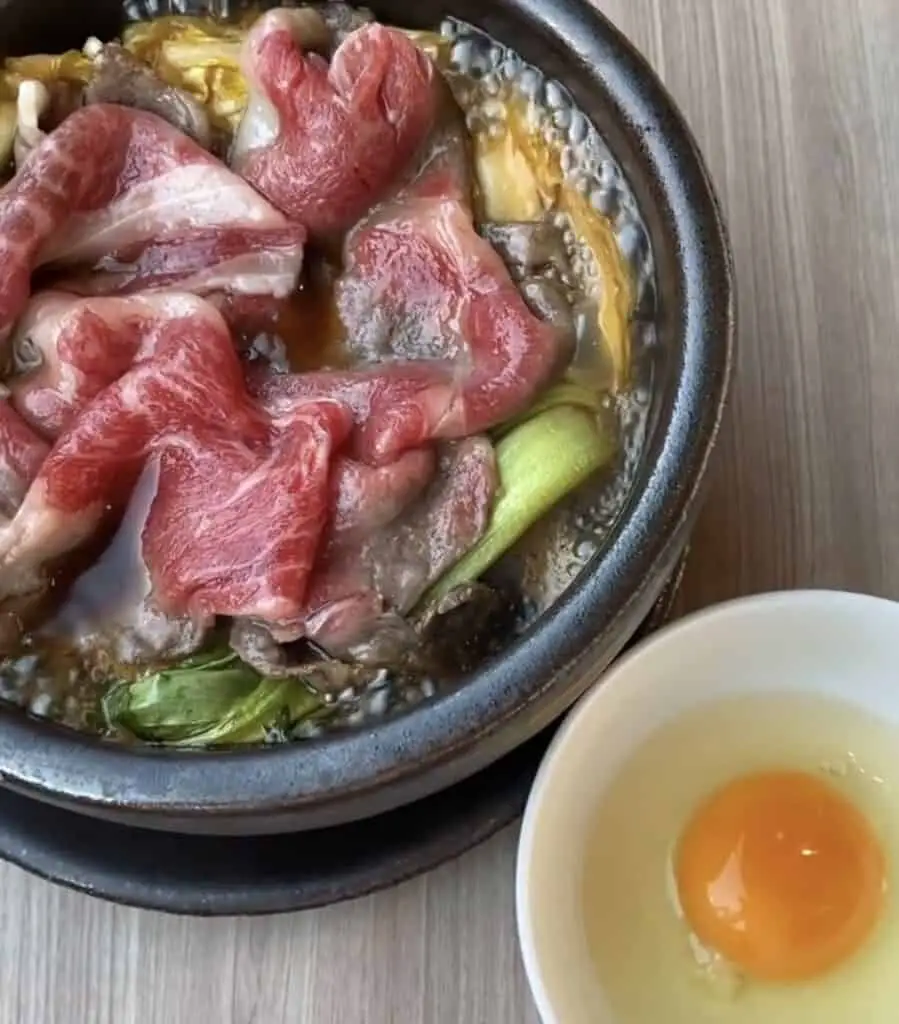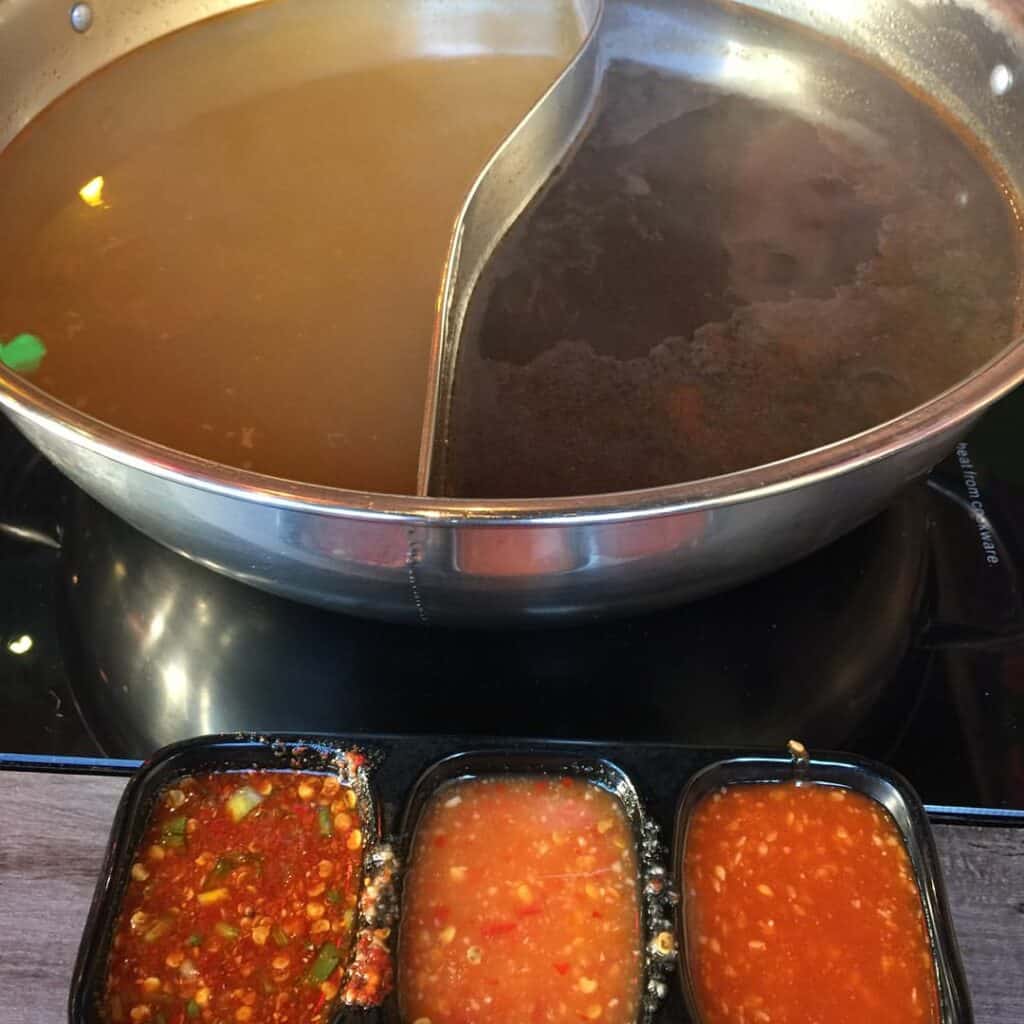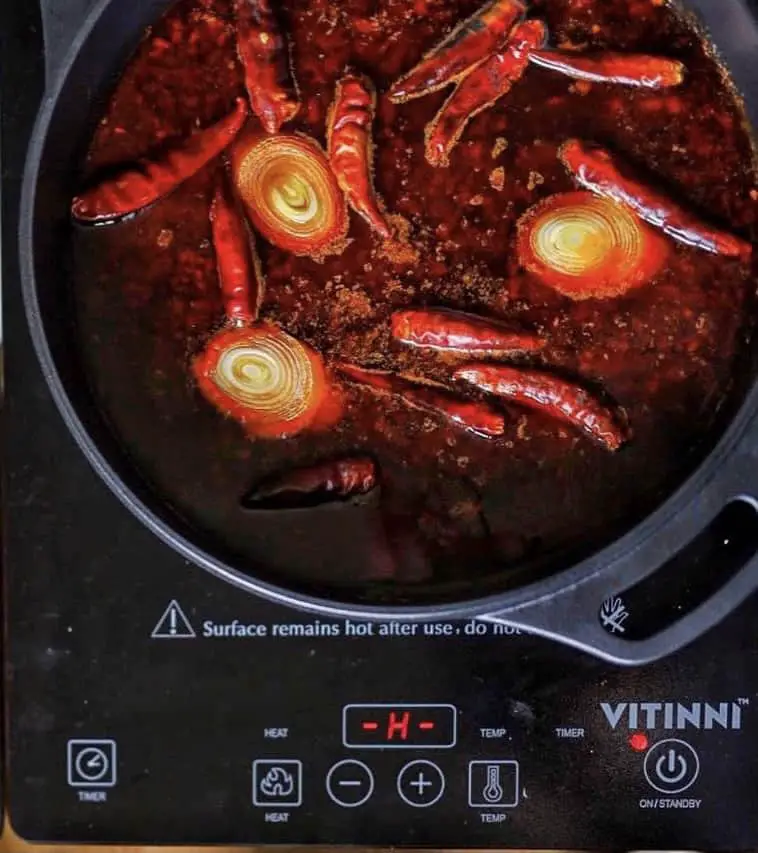There are countless different iterations of Asian cuisine, and sukiyaki bears a lot of resemblance with other east Asian dishes, commonly known as hot pot. There are three sisters of Japanese cuisine – Sukiyaki, Teriyaki, and Yakitori – and though they’re vastly different in texture, taste, and heat, it can be easy to get them confused. It’s always a surprise when, upon the first bite, you discover the heat is more than you can handle.
Japanese sukiyaki typically isn’t very spicy, instead featuring a relatively sweet flavor. However, this doesn’t necessarily mean that spicy varieties don’t exist. For example, sukiyaki recipes originating in Laos and Thailand are known to use additional spices that can amp up the heat factor.


We’re going to take a look at what you can expect when you first try sukiyaki, and we’ll discuss ways to make it spicier if its mainly sweet flavor doesn’t end up satisfying your taste buds, so bear with us.
Is Sukiyaki Spicy?
Sukiyaki is a nabemono dish, meaning that it’s essentially the Japanese version of a hot pot. Nabemono is often served with a nice warm cup of sake. This is the kind of meal that you’ll typically see sumo wrestlers eating so that they can bulk up. While you won’t have to consume quite as much of it as a sumo wrestler, you may want to after you give it a shot.
However, the name “hot pot” evokes images of a meal that will just as soon burn your tastebuds off as taste delicious. Thankfully, you typically won’t have to worry about sukiyaki being too spicy for you. This dish features a few different east asian spices, but nothing that will compare to the red-hot nature of Indian or Thai food.
The most common ingredients that are used to make traditional sukiyaki are sugar, soy sauce, and mirin. As you’d expect, this doesn’t exactly result in a spicy hot pot, instead featuring equal parts tangy and sweet flavors. The flavor of sukiyaki is further mellowed out by dipping the ingredients in a mixture of raw eggs before eating them.

So where does the spicy reputation of sukiyaki come from? The thing to consider is that there are various forms of sukiyaki, and all of them aren’t necessarily made in Japan. For example, in Laos, there is a local variety of sukiyaki that shares the same name but has a few crucial differences.
As with Japanese sukiyaki, it is a hot-pot type dish that features both noodles and thinly sliced pieces of beef (don’t use something like wagyu beef for this), but it is heavily spiced, adding flavor and heat. This kind of sukiyaki may end up upsetting your stomach if you’re not too used to consuming spicy dishes.
This isn’t even the only regional variety of sukiyaki that may be too hot for you, as there’s a different version of the dish in Thailand. This is known as Thai Suki, though it isn’t quite as similar to the Japanese variety as the Laotian one is.
Whereas Japanese sukiyaki is technically a hot pot dish, it bears more in common with a soup than a traditional hot pot. Thai suki shares a lot in common with Chinese and Mongolian hot pot recipes, where you are served slices of raw meat, noodles, and vegetables to be cooked in a pot of hot broth.

So where does the spiciness come into play? Once you’re satisfied with how thoroughly you’ve cooked your food, you will then dip your meat/vegetables/noodles into a bowl of sukiyaki sauce (known as nam chim suki) on the side. The dipping sauce features plenty of chili, chili sauce, and lime, which is what is responsible for the intense heat.
Why Are There So Many Kinds of Sukiyaki?
We understand that it can get pretty confusing to sort through the various types of sukiyaki, so here’s a helpful table that you can use to determine whether or not a dish will be spicy:
| Regional version | Spiciness out of 10 |
| Japanese sukiyaki | 2 – 3 |
| Laotian sukiyaki | 5 – 6 |
| Thai sukiyaki | 7 – 8 |
So why do all of these dishes share the same name? The simple fact is that southeast Asian countries have been culturally influencing each other for thousands of years, so it only makes sense to expect that they have some similarities in their cuisines. This is similar to how countries like France and Switzerland share a passion for things like cheese fondue.
How to Make Your Sukiyaki Spicier

If you’re preparing your own sukiyaki and you’d like to add a bit of an extra kick to it to help counteract some of the sweetness, you have a few extra ingredients that you can add. One of the best options at your disposal is some high-potency chili paste, which will ensure that you don’t alter the base flavor too heavily.
This is because chili paste will add to the spiciness of your sukiyaki without making it too bitter, which is a common unintended side-effect of spicy ingredients. If you can’t get your hands on chili paste, chili powder is another ingredient that you can add in, and it should dissolve into the rest of the soup nicely, thickening it up a little bit depending on how much you added.
If you can’t find either of these, then you can do it the old-fashioned way and slice up a few chili peppers, adding them to the soup. Keep in mind that this will make the spiciness a little more localized, and if you get a concentrated spoonful of the chili pepper seeds, then you may get a little more spice than you bargained for!
For cooks who don’t mind straying away from exclusively asian ingredients, you can also opt for some more exciting peppers, including habaneros, scotch bonnets, and even carolina reapers. As you work with spicier and spicier peppers, be more careful about how much you add to your sukiyaki if you don’t want to end up with a dish that’s too spicy to even consume!
If you’re interested in learning more about Japan or its cuisine, check out our 8 Answers About Japan FAQ.